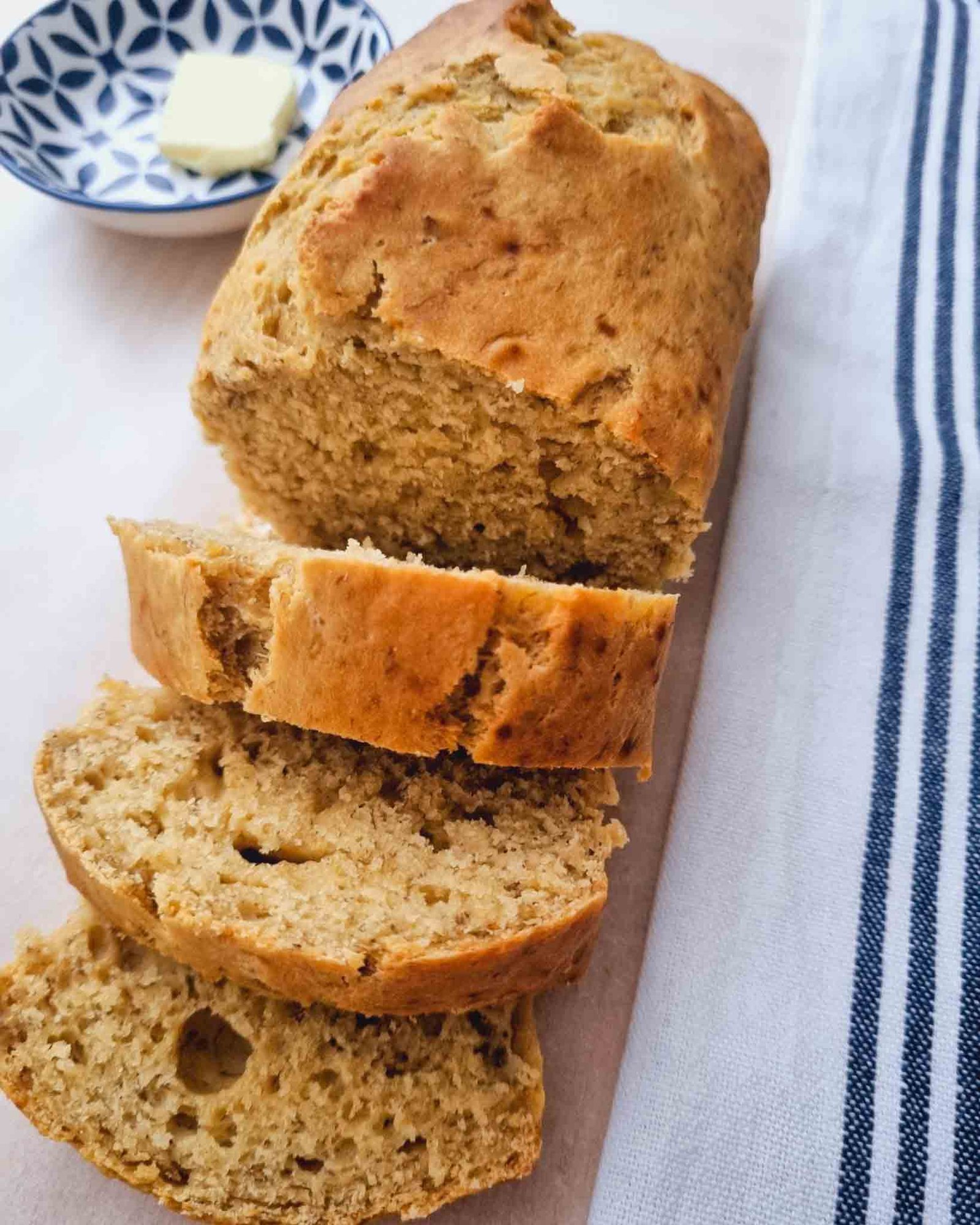
Newsletter Subscribe
Enter your email address below and subscribe to our newsletter

Enter your email address below and subscribe to our newsletter
Many people grew up with the smell of banana bread wafting through their homes. Besides nostalgia and memories, banana bread is a convenient way to use overripe bananas. Banana bread was popularized by home cooks in the 1930s. The initial recipe used minimal ingredients. Nowadays, modern versions include nuts, spices, raisins, and chocolate chips.
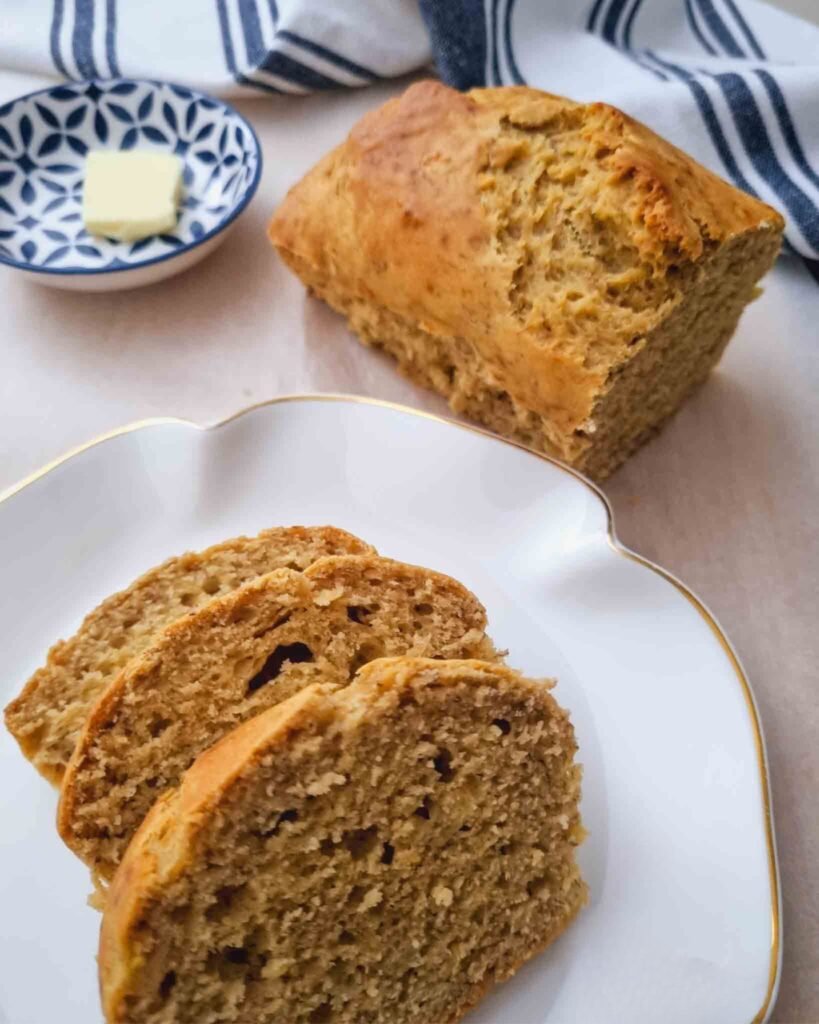
Making banana bread is not rocket science; it’s pretty simple. However, there are a few steps to ensure success. Many people use baking soda to make their banana bread rise. They rely on the banana’s natural acidity to activate the baking soda. I tried that, and it didn’t work.
The bread simply does not rise, and the banana bread turns out dense. Relying on the overripe banana to activate the baking soda does not work all the time, and some overripe bananas lack the required amount of acidity to make the bread rise.
Did you know that bananas’ acidity is highest when they are unripe and reduces as they ripen? This recipe relies on the banana’s natural sugars and uses minimal sugar.
Bananas, All purpose flour, Baking Soda, Baking Powder, Salt, Nutmeg, Cinnamon, Brown Sugar, Butter or canola oil, vanilla extract and eggs, Nuts, Raisins, Chocolate chips
It is essential to choose the ripest bananas for this recipe. Overripe bananas with brown spots are ideal as they will be easier to mash. All-purpose flour adds structure, whilst baking soda and baking powder are important leavening agents. Salt, nutmeg, and cinnamon add depth and aroma.
Brown sugar adds a molasses-like flavour to the Banana bread. Melted butter and canola oil adds moisture, but you can also choose to use butter alone. Other recipes that use vegetable oil are often not as tasty as the ones that use melted butter only or a combination of melted butter and vegetable oil.
Eggs help to bind the ingredients, whereas vanilla adds extra warmth and sweetness. Chopped nuts, raisins, or chocolate chips are optional. We’ve found that chocolate chips add a decadent taste to the bread. You can also mix and match the combination according to your preference.
Preheat the oven: Preheating ensures that the banana bread enters a warm environment, which is required to activate the baking powder and baking soda. This is called the “chemical reaction process.” This step is also very important: it ensures that the banana bread bakes evenly and that the baking time is accurate. Grease the baking trays and loaf pans with butter, or use parchment paper. Another technique is to use foil tins. Most people choose to use 9×5-inch loaf pans.
Mash the bananas: Choose a large bowl for this process. Mash the overripe bananas until smooth. Use a fork to mash the bananas. Avoid the temptation to chuck the bananas into a blender or food processor with the wet ingredients. You want chunks of banana; this is necessary to prevent the banana bread from becoming dense.
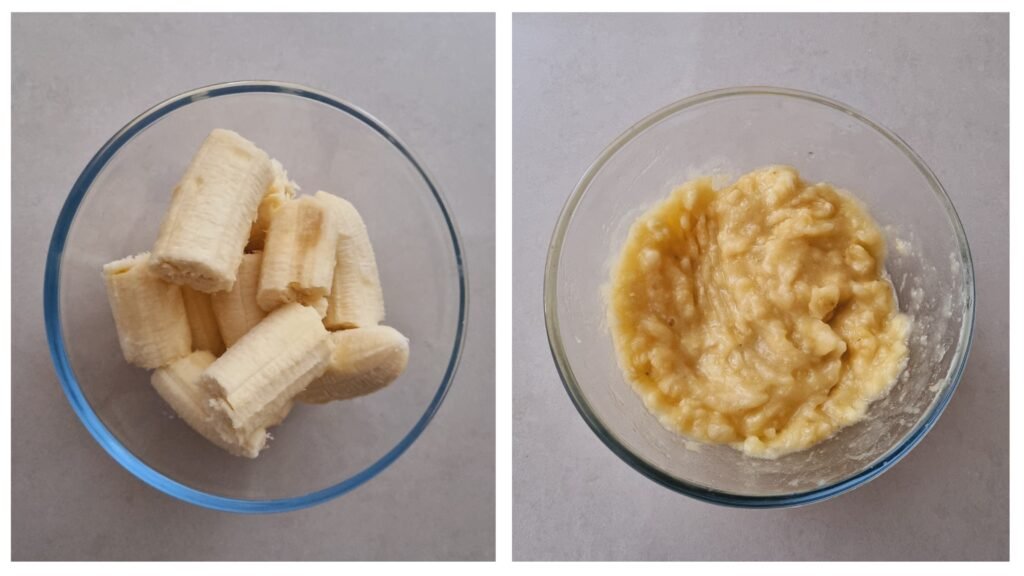
Sift the Dry Ingredients: Begin by sifting all the dry ingredients into a bowl. The purpose of sifting the ingredients is to aerate the flour and remove the lumps. This will result in a lighter texture for the bread. Start with the all-purpose flour, next add the baking powder and baking soda, both of these agents provide a leavening effect for the bread and will help it to rise properly. The ground cardamom and nutmeg add spiciness to the bread. Use a fine mesh or sieve to sift the ingredients.
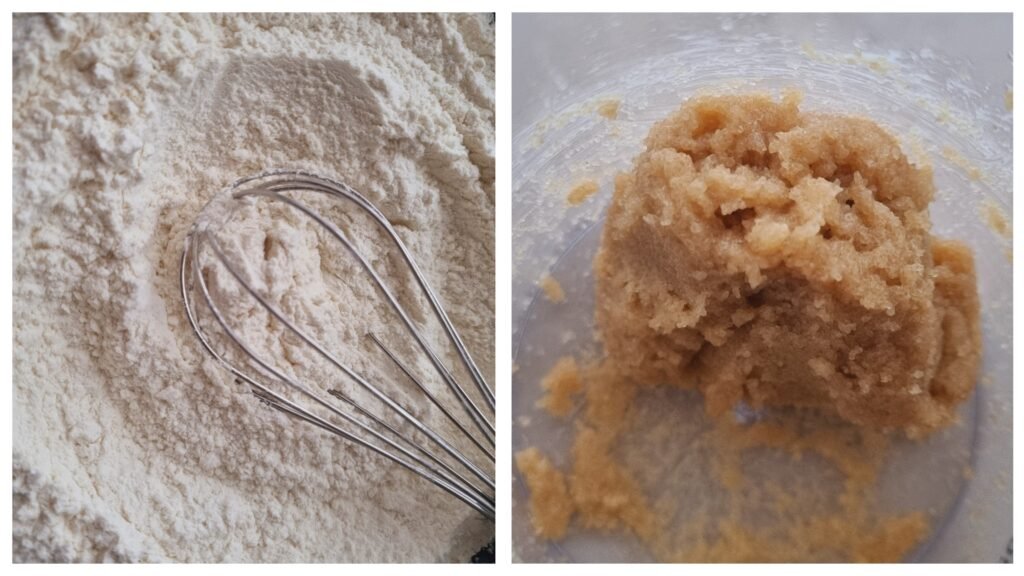
Combine the Wet Ingredients: In a large bowl, melt the butter. Add the sugar and eggs, and whisk the mixture thoroughly until the sugar dissolves. You can also use powdered sugar or caster sugar as a sweetener for the banana bread. Stir in the vanilla extra. Use a fork, whisk, or an electric mixer to accomplish this task. Make sure that there are no clumps of egg or sugar left.
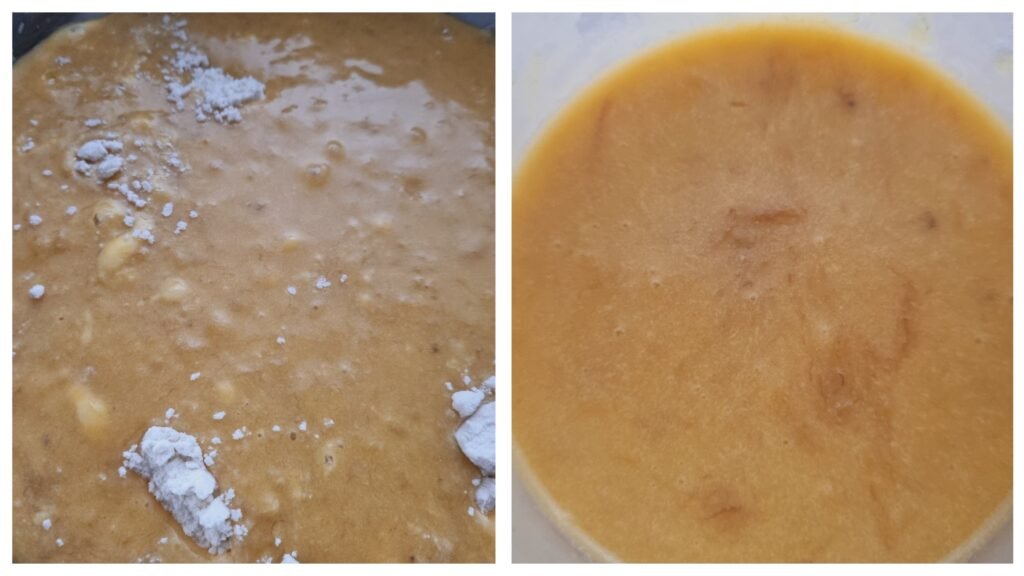
Combine wet and dry ingredients: Mix the dry and wet ingredients. Stir until everything is combined. Only mix three to four times. Over-mixing will result in dense bread. Avoid hand blenders. They also incorporate air into the banana batter, which causes the banana bread to rise unevenly.
If you are using nuts, chocolate chips or raisins, this is the time to gently fold them into the batter.
Bake the Banana Bread: Pour the batter into the baking tray. Bake for 1 hour and 15 minutes. Check the banana bread at the 50—to 60-minute mark. Has it risen? If it is turning brown rather quickly, add foil. After the banana bread has baked fully, remove it from the oven and cool it on a wire rack to cool completely.
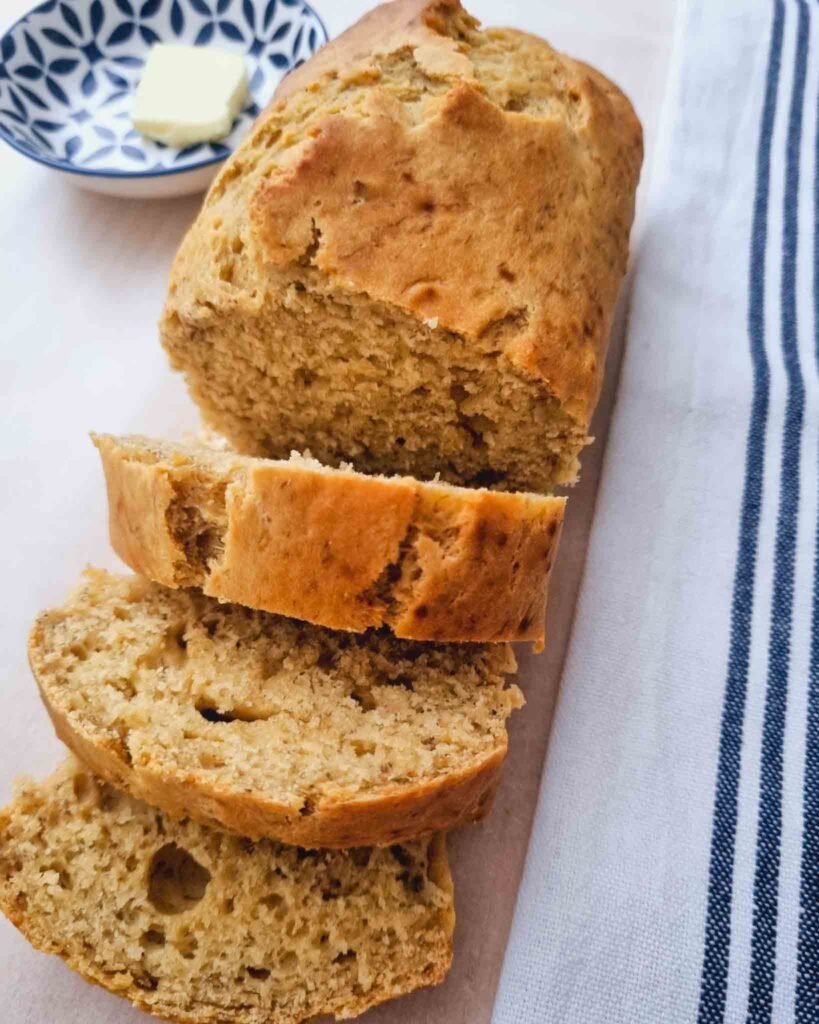
Overripe Bananas are vital to this recipe. Bananas with brown spots are sweeter and softer and help create a moist and delicious loaf. Place the bananas in a brown paper bag for one or two days. Place the bananas on a tray and pop them in the oven for 15 minutes at 300°F (150°C) until they turn black.
Use various spices such as nutmeg, cardamom, and cinnamon to enhance the flavour of banana bread. Be creative regarding the Nuts, Dried fruits, and seed choices. You have so many options here. You can add shaves of coconut, dark chocolate chips, raisins, pecan nuts, almonds, pumpkin seeds and cranberries.
Many people want to know if you can use different types of flour to create a gluten-free version, and the answer is yes! Whole wheat flour, almond flour, or oat flour will work, too! The texture of the banana bread will vary.
Banana bread muffins are also a fantastic way to enjoy this recipe. If you don’t have a loaf pan, you can divide the batter into muffin tins. This will make it portable and easier to eat when you are traveling. It is important not to over-mix the banana batter, as it will develop gluten, which will result in a dense texture. Whatever you do, do not use a hand blender or a mixing machine to mix the wet and dry ingredients.
You can enjoy the Bread on its own or serve it with a scoop of vanilla ice cream. Some individuals drizzle honey or syrup with butter on their banana bread. If you loved this recipe, then make sure to check out our Fluffy Pancakes recipe, too.
Store in an airtight container. If you live in a hot climate, you can leave the bread in your fridge. If the weather is cold with snow, you can leave it on the counter top. It should last for two to three days.
